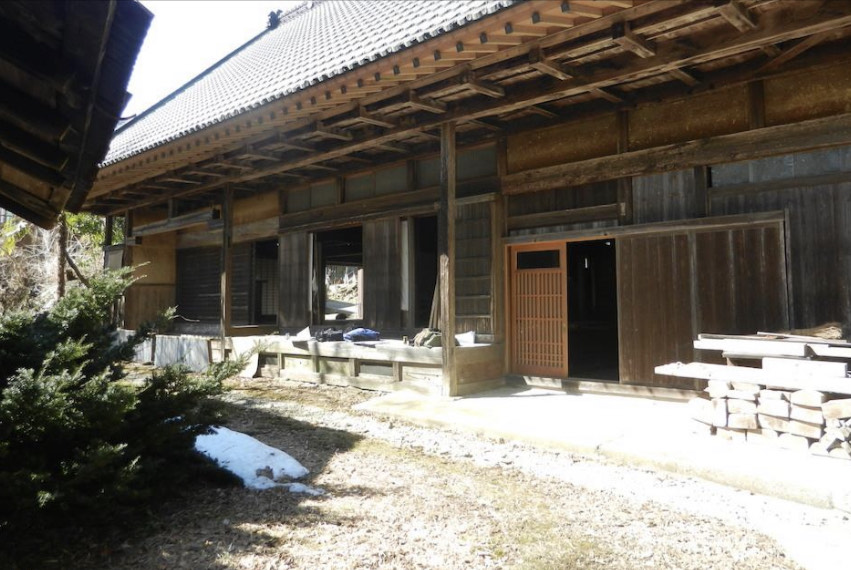
登録有形文化財 旧高橋家住宅とは、東京都で島しょ部を除く唯一の村「檜原村」の標高約500mに位置する人里(へんぼり)地区の旧街道沿いに建つかぶと造りの民家です。正面は背がい造りとし、式台玄関を備え、内法の高い内部空間で、座敷や神棚など随所に良質な造りが見られます。
檜原村の茅葺屋根は入母屋屋根を基本とし、両妻を切り上げるかぶと造りとなり、明治に入り二重かぶと造に発展したと考えられます。旧高橋家住宅主屋はかぶと造りであり、登録有形文化財の登録基準である「造形の基本となっているもの」として、二重かぶと造への変遷の過渡期に位置する建物であり、重要であるとされ、平成29年5月に登録有形文化財に登録されました。
The former Takahashi Residence was a kabuto helme t-shaped priva te residence. I t faced the formerhighway in the Henbori sector of Hinohara Village, located inthe Nishitama District of Tokyo. Its front is accentuated by a protruding segai-zukuri roof, while the high-ceilinged interior features an elevated entrance, high-quality tatami mat rooms, household shrines, and more dispersed throughout.
旧高橋家住宅の歴史
旧所有者である高橋家の来歴は、過去帖から享保13年(1728)に没した七郎兵衛が初代とされ、代々農家で養蚕もしていました。7代の榮順(安政2年~昭和11年)は医者(漢方医)で、駕籠(かご)に乗り山を越えて往診もしていました。その頃から屋号を医者殿(いしゃど)とよばれており、当時の駕籠も現存しています。
Records show the home's first owner to be one Shichirobe, a farmer and sericulturist who died in 1728. However, the 7th generation owner, Eijun (1855-1936), was a doctor of Chinese herbal medicine who would ride a palanquin across mountains for house calls. Since then, the home has been referred to as
"Dr. Takahashi's house and clinic," and the doctor's palanquin still exists to this day.